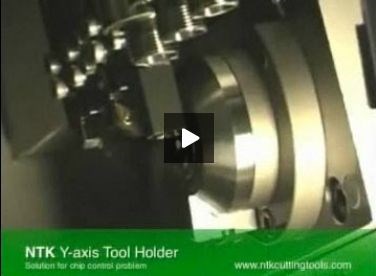Why the Y?
See how Y-axis toolholders enable Swiss-type lathes to realize better chip control.
Share





This quick video shows improved chip control using the Y-axis Control toolholders.

Although the company admits the Y-Axis Control tools look chunky (that’s the company’s word, not mine), each occupies only one slot on a gang tool slide. Because of their bulkier design, though, only one or two tools can be installed on the slide, and a pair of them can’t be located side-by-side. Barstock size can vary depending on the tool’s position on the slide as well as the difference in overhang from a conventional X-axis tool (Y-Axis Control tools are slightly longer). The tools accept 35- and 55-degree ISO inserts.
Related Content
-
Jergens Pull Studs Enable Quick Changeovers
SP140 and K02 pull studs offer quick-change solutions for vise or gripper jaws, electronic component manufacturing, packaging machines, medical technology and automation.
-
Rego-Fix Toolholding System Reduces Coolant Consumption
MQL PG collets are designed for machines using one-channel, internal through-spindle MQL systems.
-
Through-Coolant System Cuts Nickel-Alloy Cycle Times by 70%
Decker Machine Works recently adopted Rego-Fix’s reCool through-coolant system for ER collets, reducing the cycle times on a nickel alloy job by 70%.















.jpg;maxWidth=300;quality=90)





